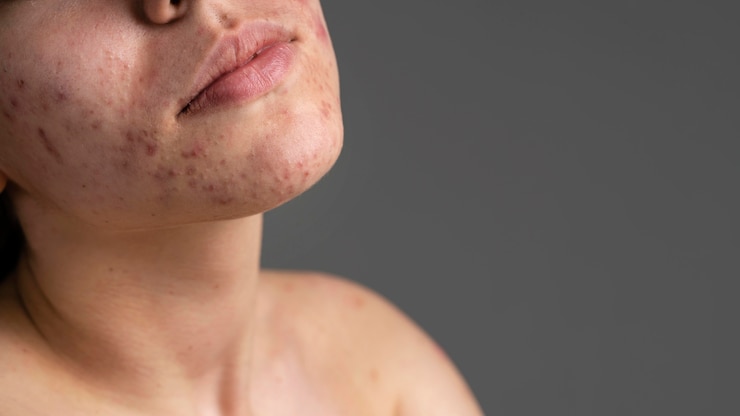Melasma is a common skin condition characterized by brown or gray-brown patches, primarily on the face. While various treatment options are available to reduce the appearance of melasma, preventing its recurrence is crucial for long-term skin health and appearance. Understanding the underlying causes of melasma and adopting preventive measures can significantly reduce the likelihood of its return after successful Melasma Treatment In Dubai.
Understanding Melasma and Its Triggers
What Is Melasma?
Melasma occurs when the skin produces excess melanin, leading to discolored patches. It commonly affects women, particularly during hormonal changes such as pregnancy or while taking hormonal contraceptives. While melasma is not harmful, its appearance can affect self-esteem and overall confidence.
Common Triggers of Melasma Recurrence
Several factors can contribute to the recurrence of melasma, including:
- Sun Exposure: Ultraviolet (UV) rays from the sun can stimulate melanin production, making sun protection essential.
- Hormonal Changes: Fluctuations in hormones, especially during pregnancy, menopause, or due to hormonal therapies, can trigger melasma.
- Genetic Predisposition: A family history of melasma may increase the likelihood of recurrence.
- Certain Medications: Some medications, including those that increase sensitivity to sunlight, can exacerbate melasma.
- Stress and Lifestyle Factors: High stress levels and unhealthy lifestyle choices may also contribute to the re-emergence of melasma.

Preventive Measures After Treatment
1. Consistent Sun Protection
Daily Sunscreen Application
One of the most effective ways to prevent melasma from recurring is to use sunscreen daily. Choose a broad-spectrum sunscreen with an SPF of 30 or higher, and apply it generously to all exposed skin. Reapply every two hours, especially when outdoors, swimming, or sweating.
Physical Barriers
In addition to sunscreen, wearing protective clothing such as wide-brimmed hats and sunglasses can further shield your skin from harmful UV rays. Seek shade whenever possible, especially during peak sunlight hours between 10 a.m. and 4 p.m.
2. Hormonal Management
Consult with Healthcare Providers
If hormonal changes are a concern, consult with a healthcare provider to discuss potential preventive measures. This may involve adjusting hormonal contraceptives or exploring alternatives during pregnancy or menopause. Understanding how hormonal fluctuations affect your skin can help you take proactive steps to minimize the risk of melasma recurrence.
3. Skincare Routine
Gentle Skincare Products
After melasma treatment, continue using a gentle skincare routine. Avoid harsh scrubs or exfoliants that can irritate the skin and potentially trigger melasma. Instead, opt for products formulated for sensitive skin, focusing on hydrating and nourishing ingredients.
Incorporating Active Ingredients
Consider incorporating skincare products containing active ingredients known to help prevent melasma recurrence. Ingredients such as:
- Hydroquinone: A skin-lightening agent that helps reduce pigmentation.
- Retinoids: Promote cell turnover and reduce the appearance of dark patches.
- Vitamin C: An antioxidant that can brighten the skin and inhibit melanin production.
- Niacinamide: Helps improve skin tone and reduce pigmentation.
4. Lifestyle Modifications
Healthy Diet
A balanced diet rich in antioxidants, vitamins, and minerals can support skin health. Foods high in vitamins C and E, such as citrus fruits, nuts, and leafy greens, can help protect the skin from oxidative stress. Staying hydrated by drinking plenty of water also aids in maintaining healthy skin.
Stress Management
Managing stress is crucial for overall health and can also affect your skin. Engage in stress-reducing activities such as yoga, meditation, or regular exercise. Prioritize self-care and mental well-being to help prevent hormonal fluctuations that may trigger melasma.
5. Regular Dermatological Check-Ups
Follow-Up Appointments
Schedule regular follow-up appointments with a dermatologist to monitor your skin's condition and the effectiveness of your preventive measures. A dermatologist can provide personalized recommendations and adjust your treatment plan if necessary.
Professional Treatments
Consider periodic professional treatments, such as chemical peels or laser therapy, as maintenance options to help keep melasma at bay. Your dermatologist can recommend the best course of action based on your skin type and history.
6. Education and Awareness
Stay Informed
Educating yourself about melasma, its triggers, and prevention strategies is essential for long-term management. Stay informed about the latest research and treatments, and do not hesitate to reach out to skincare professionals for advice.
Conclusion
Preventing melasma recurrence after treatment requires a multifaceted approach that combines sun protection, hormonal management, a suitable skincare routine, lifestyle modifications, regular dermatological check-ups, and ongoing education. By understanding the underlying causes of melasma and adopting proactive measures, you can significantly reduce the risk of its return and maintain a healthy, even skin tone. Emphasizing prevention will not only enhance the results of your treatment but also boost your confidence and overall well-being.





Comments